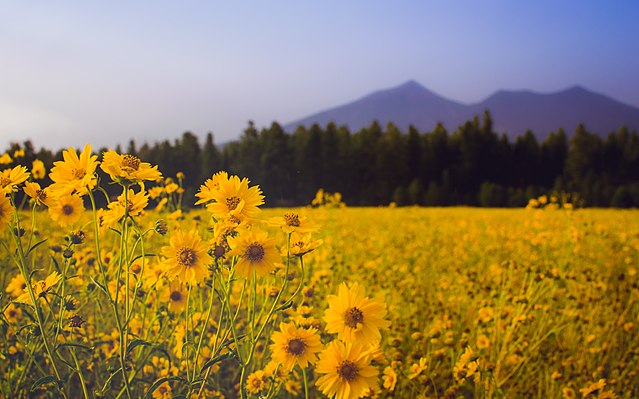When most people think of Arizona weather, they picture scorching desert heat and endless sunshine. But nestled in the mountains of northern Arizona, Flagstaff tells a completely different weather story. This charming mountain city experiences a climate that might surprise you – complete with four distinct seasons, snow-covered winters, and pleasantly cool summers that provide a refreshing escape from the desert heat below.
Whether you’re planning a visit, considering a move, or simply curious about this unique Arizona climate, understanding Flagstaff’s weather patterns will help you make the most of what this mountain city has to offer. From snowy winter wonderlands to crisp autumn days perfect for hiking, Flagstaff’s weather creates opportunities for year-round outdoor adventures that you won’t find anywhere else in the Grand Canyon State.
Understanding Flagstaff’s Unique Climate
High Elevation Weather Patterns
What makes Flagstaff’s weather so dramatically different from the rest of Arizona? The answer lies in elevation. Sitting at approximately 7,000 feet above sea level, Flagstaff experiences what meteorologists call a humid continental climate. This high elevation acts like nature’s air conditioner, keeping temperatures significantly cooler than the desert cities below.
The elevation difference creates a fascinating phenomenon – you can literally drive from 100-degree heat in Phoenix to 70-degree comfort in Flagstaff in just two hours. This elevation effect means that for every 1,000 feet you climb, temperatures drop by about 3-5 degrees Fahrenheit. It’s like having a natural escape hatch from Arizona’s notorious summer heat.
Four Distinct Seasons in the Desert State
Unlike most of Arizona, which experiences essentially two seasons (hot and less hot), Flagstaff enjoys four genuine seasons. Each season brings its own personality, weather patterns, and recreational opportunities. Spring arrives with wildflower blooms and mild temperatures, summer provides cool mountain refuge, fall displays stunning aspen colors, and winter transforms the city into a snowy playground.
This seasonal variety makes Flagstaff feel more like a Colorado mountain town than a traditional Arizona city. The dramatic seasonal changes create a rhythm of life that residents and visitors alike find refreshing and invigorating.
Flagstaff Weather by Season
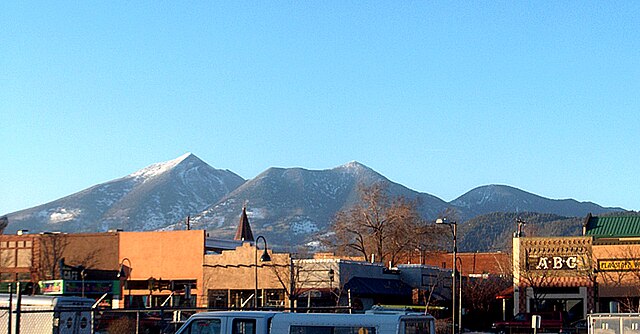
Spring Weather in Flagstaff (March-May)
Temperature and Precipitation Patterns
Spring in Flagstaff is a season of awakening and dramatic weather swings. March often feels more like late winter, with temperatures ranging from highs in the 40s to 50s Fahrenheit and lows dipping into the teens and twenties. Don’t be surprised if you encounter snow in March – it’s quite common and adds to the city’s charm.
As April arrives, temperatures begin their steady climb, with highs reaching the comfortable 50s to 60s range. May brings truly pleasant spring weather, with daytime temperatures often reaching the 60s and 70s, though nights remain crisp and cool, sometimes dropping into the 30s.
Spring precipitation in Flagstaff can be unpredictable. You might experience late-season snowstorms in March and April, followed by gentle spring rains that help wildflowers bloom across the high country. The average precipitation during spring months ranges from 1.5 to 2.5 inches per month.
What to Expect and Pack
Spring weather in Flagstaff requires layered clothing and flexibility. You’ll want warm jackets for chilly mornings and evenings, but lighter layers for when the afternoon sun warms things up. Waterproof boots are essential for dealing with melting snow and muddy trails.
This season offers some of the most dramatic weather watching opportunities. You might witness snow flurries in the morning followed by brilliant sunshine in the afternoon. The changing weather patterns create stunning photography opportunities, especially when snow dusts the red rocks surrounding the city.
Summer Weather in Flagstaff (June-August)
Escape the Heat: Cool Mountain Summers
Summer in Flagstaff is nothing short of magical, especially when you consider that Phoenix residents are sweltering in 115-degree heat just two hours south. Flagstaff’s summer highs typically range from the mid-70s to low 80s Fahrenheit – absolutely perfect for outdoor activities.
The real treat comes at night when temperatures drop into the 40s and 50s. You’ll actually need a light jacket or sweater for evening activities, something that seems almost impossible to believe when you’re living in the desert Southwest. These cool nights provide perfect sleeping weather and make camping an absolute joy.
Humidity levels remain low throughout the summer, typically ranging from 15% to 40%, which means that even when temperatures reach the low 80s, the heat feels comfortable rather than oppressive. The combination of moderate temperatures, low humidity, and abundant sunshine creates ideal conditions for hiking, camping, festivals, and outdoor dining.
Monsoon Season Considerations
Late summer (typically July and August) brings monsoon season to Flagstaff, though the city experiences these storms differently than lower elevation areas. Monsoon thunderstorms in Flagstaff tend to be less intense but more frequent, often bringing welcomed afternoon and evening precipitation.
These summer storms can be spectacular to watch, with dramatic lightning displays illuminating the surrounding peaks. However, they can also create flash flood conditions in washes and low-lying areas, so outdoor enthusiasts need to remain weather-aware during this season.
The monsoon season typically brings 2-4 inches of precipitation per month, with most rainfall occurring in brief but intense afternoon thunderstorms. These storms help keep summer temperatures comfortable and support the lush forest growth that surrounds the city.
Fall Weather in Flagstaff (September-November)
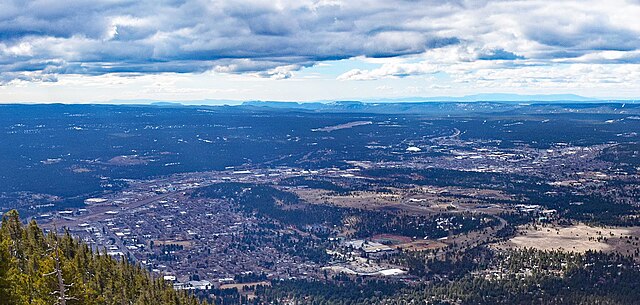
Autumn Colors and Crisp Air
Fall in Flagstaff rivals New England for sheer beauty, and the weather provides the perfect backdrop for enjoying the season’s spectacular display. September starts with warm days in the 70s and cool nights in the 40s, creating ideal conditions for hiking and outdoor activities.
October brings the peak of fall color season, with daytime temperatures settling into the comfortable 60s and nighttime temperatures dropping into the 30s. The crisp, clear air enhances visibility, making distant mountains appear closer and colors more vivid.
November ushers in the transition to winter, with highs dropping into the 50s and lows often falling below freezing. The first snow of the season often arrives in November, dusting the golden aspen leaves with white and creating postcard-perfect scenery.
Perfect Weather for Outdoor Activities
Fall weather in Flagstaff creates optimal conditions for hiking, camping, and photography. The clear, dry air provides excellent visibility for stargazing, while comfortable daytime temperatures make extended outdoor activities enjoyable.
The lack of summer thunderstorms means more predictable weather patterns, making fall an excellent time for planning outdoor adventures. Cool nights require warm sleeping gear for camping, but the absence of insects and comfortable daytime temperatures more than compensate for the extra equipment needed.
Winter Weather in Flagstaff (December-February)
Snow, Cold, and Winter Wonderland
Winter transforms Flagstaff into Arizona’s winter wonderland, with average snowfall totaling around 100 inches per year. December through February typically see daytime highs in the 30s and 40s Fahrenheit, with nighttime lows often dropping well below freezing, sometimes reaching single digits or even below zero during particularly cold snaps.
Snow can fall during any winter month, with January and February typically receiving the heaviest accumulations. The city’s elevation ensures that snow sticks around, creating opportunities for snowshoeing, cross-country skiing, and building snowmen – activities that seem surreal in the desert Southwest.
Winter storms can be significant, sometimes dumping several feet of snow in a single event. These storms often arrive with little warning, so residents and visitors need to stay weather-aware and prepared for rapidly changing conditions.
Winter Weather Preparation Tips
Winter weather in Flagstaff requires serious preparation, especially for those accustomed to Arizona’s typically mild winter climate. Four-wheel drive or all-wheel drive vehicles become essential, along with tire chains for emergency situations.
Home heating costs increase significantly during winter months, and power outages during severe storms can create challenging situations. Residents typically keep emergency supplies including extra food, water, flashlights, and alternative heating sources.
Despite the challenges, winter in Flagstaff offers unique recreational opportunities. The Arizona Snowbowl provides downhill skiing and snowboarding, while miles of forest roads become cross-country skiing and snowshoeing trails.
Monthly Weather Breakdown
January Through June Weather Patterns
January represents Flagstaff’s coldest month, with average highs around 43°F and lows near 16°F. Snow cover is common, and severe cold snaps can drive temperatures well below zero. February continues the cold pattern but begins showing signs of spring’s approach, with slightly warmer daytime temperatures.
March brings highly variable weather, with spring conditions some days and winter storms others. Average temperatures begin climbing, but snow remains possible throughout the month. April represents true transition weather, with temperatures ranging from winter-like to pleasantly mild within the same week.
May delivers genuine spring conditions, with comfortable daytime temperatures in the 60s and 70s, though morning frost remains possible. June ushers in summer weather, with highs reaching the upper 70s and low 80s, creating perfect conditions for outdoor activities.
July Through December Climate Overview
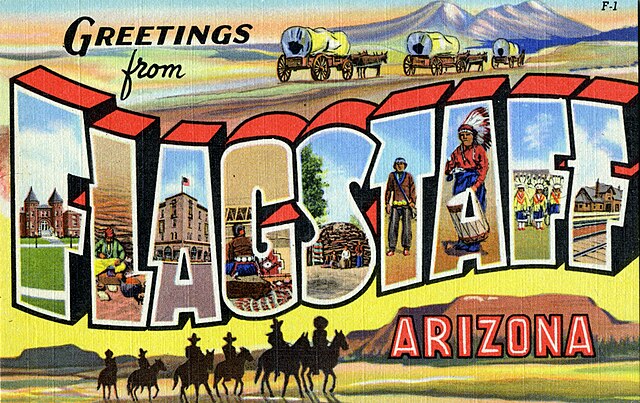
July and August represent Flagstaff’s warmest months, though temperatures rarely exceed 85°F. Monsoon thunderstorms provide afternoon drama and help moderate temperatures. September continues warm weather while gradually transitioning toward fall conditions.
October brings peak fall color and comfortable temperatures perfect for hiking and photography. November marks winter’s return, with first snow often arriving mid-month. December settles into full winter mode, with regular snowfall and freezing temperatures.
Understanding these monthly patterns helps visitors and residents plan activities and prepare for seasonal weather changes. Each month offers unique opportunities and challenges based on typical weather patterns.
Extreme Weather Events in Flagstaff
Snowstorms and Blizzard Conditions
Flagstaff can experience severe winter storms that create blizzard conditions with heavy snowfall, high winds, and dangerous visibility. These storms sometimes dump 2-3 feet of snow in 24-48 hours, effectively shutting down the city until snow removal crews can clear major roads.
The city’s elevation and geographic location make it susceptible to both Pacific storm systems and occasional Arctic cold fronts. When these weather systems combine, they can create extreme conditions that challenge even experienced mountain residents.
Record snowfall events have exceeded 5 feet in single storms, creating situations where residents become temporarily stranded in their homes. The city has developed robust snow removal capabilities, but extreme events can overwhelm even well-prepared infrastructure.
Summer Thunderstorms and Flash Floods
While summer thunderstorms in Flagstaff are generally less severe than those in lower desert areas, they can still create dangerous conditions. Lightning strikes pose risks in the high country, where exposed ridges and peaks increase strike probability.
Flash flooding can occur in washes and low-lying areas during intense thunderstorms, though the mountainous terrain typically provides good drainage. Visitors hiking in canyons and washes need to remain aware of weather conditions, as storms can develop rapidly during monsoon season.
Hail sometimes accompanies severe thunderstorms, with large hail occasionally causing property damage and creating hazardous driving conditions. These events are relatively rare but can be dramatic when they occur.
How Flagstaff Weather Compares to Other Arizona Cities
The weather contrast between Flagstaff and other Arizona cities is striking. While Phoenix experiences summer highs exceeding 115°F, Flagstaff enjoys comfortable temperatures in the 70s and 80s. This temperature difference of 30-40 degrees makes Flagstaff a popular summer retreat for desert residents.
Winter differences are equally dramatic. While Tucson and Phoenix enjoy mild winter weather with occasional frost, Flagstaff experiences genuine winter conditions with snow, ice, and freezing temperatures. This climate diversity within a single state creates unique recreational and lifestyle opportunities.
Precipitation patterns also differ significantly. Flagstaff receives approximately 23 inches of annual precipitation, much of it as snow, while Phoenix receives only about 8 inches annually. This increased moisture supports lush forest growth and creates seasonal streams and lakes that don’t exist in desert areas.
Best Times to Visit Flagstaff Based on Weather
Peak Tourist Seasons
Summer (June through August) represents Flagstaff’s peak tourist season, with perfect weather attracting visitors seeking escape from desert heat. Temperatures remain comfortable for all outdoor activities, though accommodation prices reach their highest levels.
Fall (September through October) offers another peak period, with spectacular autumn colors and ideal hiking weather. The combination of comfortable temperatures, clear skies, and stunning scenery makes fall extremely popular among photographers and outdoor enthusiasts.
Off-Season Weather Advantages
Winter offers unique advantages for visitors who enjoy snow sports and don’t mind cold weather. Accommodation prices drop significantly, and the snow-covered landscape provides opportunities for activities unavailable elsewhere in Arizona.
Spring can be an excellent time to visit for those who appreciate dramatic weather and don’t mind variable conditions. Fewer crowds, moderate prices, and the possibility of seeing snow and wildflowers in the same day create memorable experiences for adventurous visitors.
Weather Impact on Flagstaff Activities
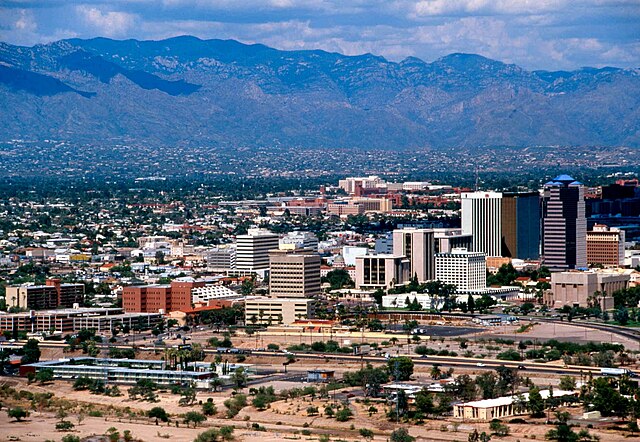
Outdoor Recreation and Weather
Flagstaff’s weather patterns create year-round outdoor recreation opportunities, though activities change with seasons. Summer’s comfortable temperatures make hiking, camping, and mountain biking ideal, while winter transforms the landscape into a playground for snow sports.
Spring and fall provide excellent conditions for rock climbing, with comfortable temperatures and stable weather patterns. However, visitors need to prepare for rapid weather changes, especially during spring when conditions can shift from sunny to snowy within hours.
Weather awareness becomes crucial for backcountry activities, as elevation changes can create dramatically different conditions within short distances. A sunny day in town might coincide with dangerous conditions on the peaks above.
Skiing and Winter Sports
Arizona Snowbowl typically operates from December through April, depending on snow conditions. The ski area benefits from Flagstaff’s reliable winter snowfall, though climate variations can affect season length and snow quality.
Cross-country skiing and snowshoeing opportunities abound throughout the national forest surrounding Flagstaff, with miles of snow-covered forest roads providing access to winter recreation areas. These activities depend entirely on adequate snowfall, making weather monitoring essential for planning.
Climate Change Effects on Flagstaff Weather
Climate change impacts are becoming visible in Flagstaff’s weather patterns, with some researchers noting trends toward earlier spring snowmelt and more extreme weather events. Average temperatures have shown slight warming trends, though the city continues experiencing genuine four-season weather.
Precipitation patterns may be shifting, with some models predicting more variable seasonal rainfall and potentially reduced winter snowpack. These changes could affect everything from ski season length to forest fire risk and water availability.
Long-term climate monitoring continues tracking these changes, helping city planners and residents prepare for potential future conditions while maintaining the outdoor recreation opportunities that make Flagstaff special.
Weather Forecasting and Resources for Flagstaff
Accurate weather forecasting becomes crucial in Flagstaff due to the potential for rapid weather changes and extreme conditions. The National Weather Service office in Flagstaff provides specialized mountain weather forecasts that account for elevation effects and local terrain influences.
Multiple weather monitoring stations throughout the area provide real-time conditions, helping residents and visitors make informed decisions about outdoor activities and travel plans. Smartphone apps and websites offer detailed forecasts, though local knowledge and awareness remain important for safe outdoor recreation.
Emergency alert systems notify residents of severe weather threats, including winter storm warnings, flash flood watches, and extreme cold warnings. Staying connected to these information sources helps ensure safety during challenging weather conditions.
Conclusion
Flagstaff’s weather stands as one of Arizona’s best-kept secrets, offering a refreshing alternative to the state’s typical desert climate. From snow-covered winter wonderlands to perfectly comfortable summer days, this mountain city provides four distinct seasons packed with unique recreational opportunities and natural beauty.
Understanding Flagstaff’s weather patterns helps visitors plan successful trips and helps residents make the most of each season’s offerings. Whether you’re seeking summer relief from desert heat, fall color photography opportunities, winter snow sports, or spring wildflower hikes, Flagstaff’s climate delivers experiences unavailable anywhere else in Arizona.
The city’s elevation creates a natural climate refuge that supports diverse ecosystems, recreational activities, and lifestyle opportunities that feel more like Colorado than typical Arizona. This climatic diversity makes Flagstaff a special place where you can ski in the morning and drive to desert warmth in the afternoon, all within the boundaries of the Grand Canyon State.
Frequently Asked Questions
1. Does it really snow in Flagstaff, Arizona?
Yes, Flagstaff receives an average of about 100 inches of snow annually, making it one of the snowiest cities in Arizona. The city’s 7,000-foot elevation ensures regular winter snowfall from December through March, with occasional snow possible from October through May.
2. What’s the best time of year to visit Flagstaff for good weather?
The best weather for most visitors occurs during summer (June-August) with comfortable temperatures in the 70s-80s, and fall (September-October) with crisp, clear days perfect for hiking and photography. However, each season offers unique advantages depending on your preferred activities.
3. How much colder is Flagstaff compared to Phoenix?
Flagstaff averages 30-40 degrees cooler than Phoenix year-round due to its elevation. While Phoenix might reach 115°F in summer, Flagstaff typically stays in the comfortable 70s-80s. Winter differences are equally dramatic, with Flagstaff experiencing snow and freezing temperatures while Phoenix enjoys mild conditions.
4. Can you drive to Flagstaff in winter without special equipment?
Winter driving to Flagstaff requires preparation, including four-wheel or all-wheel drive vehicles and tire chains for emergency use. Roads can become icy and snow-covered quickly during storms, making proper vehicle equipment and winter driving experience essential for safety.
5. Does Flagstaff have monsoon season like the rest of Arizona?
Yes, Flagstaff experiences monsoon season from July through August, but the storms are typically less intense than in desert areas. Mountain monsoons bring welcome afternoon thunderstorms with lightning displays and moderate rainfall that helps keep summer temperatures comfortable.

